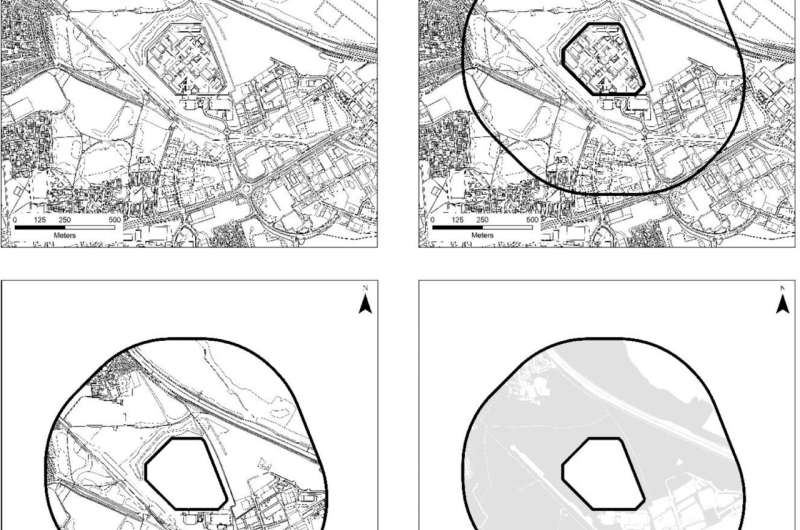Greenspace outside prison walls has a positive effect on prisoner wellbeing

Prisoners who are incarcerated in buildings located in green areas are less likely to engage in self-harming or violent behaviors, new research shows.
According to a study by researchers at the Universities of Birmingham and Utrecht, green areas outside prisons can have a positive effect on wellbeing, alongside the proven positive effects of greenspace inside the prison walls. The research is published in Wellbeing, Space and Society.
In the study, researchers used GIS (Geographical Information Systems) data to map greenspace, stretches of water and also major roads in a 500m 'buffer zone' surrounding prisons in England and Wales. This data was then examined in relation to official statistics on violence and self-harm in prisons.
The team found strong evidence that self-harm and violence were reduced across all prison types where prisons were surrounded by a green buffer zone.
Lead author, Professor Dominique Moran, said: "We already know that the characteristics of prisons themselves affect the wellbeing of both prisoners and staff, but our research suggests that the spaces surrounding prisons are also important. Cost, convenience and local community relations typically dictate where prisons are built—we suggest the effects of prison location on the incarcerated should also be considered."
The results are surprising, given that prisons in more rural locations are likely to be further away from home for urban prisoners, and harder to reach by public transport. Visitation is known to enhance wellbeing, but greater distance from home may affect the regularity of visits. The inclusion of major roads in the analysis showed that both greenspace and connectivity are important factors for wellbeing. Future prison location should seek to balance green space with transport links.
The researchers were unable to take into account information about prisoners' views from cell windows—however, since views to outside buffer zones are likely to be blocked by prison walls and fences, the research poses interesting questions about how surrounding greenspace might deliver benefits when it cannot be seen.
"We suggest that prisons located within these buffer zones might have better air quality, lower environmental pollution and a more peaceful soundscape," adds Professor Moran. "Although more research is needed in this area, all of these factors may have a positive effect on prisoner wellbeing."
More information: Dominique Moran et al, Does prison location matter for prisoner wellbeing? The effect of surrounding greenspace on self-harm and violence in prisons in England and Wales, Wellbeing, Space and Society (2021). DOI: 10.1016/j.wss.2021.100065
Provided by University of Birmingham



















